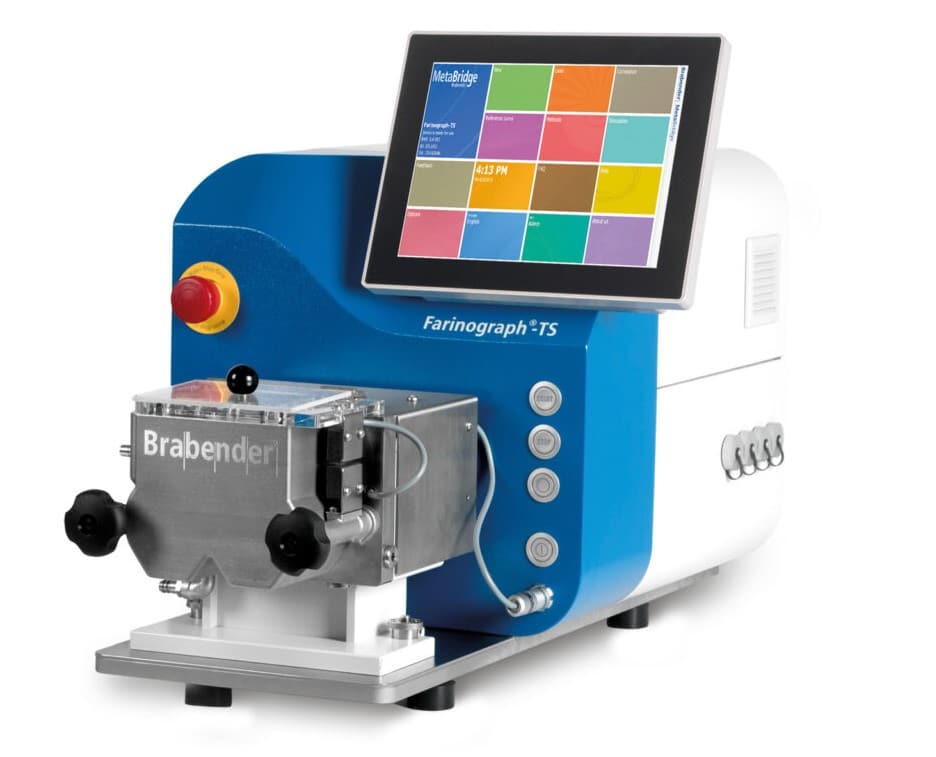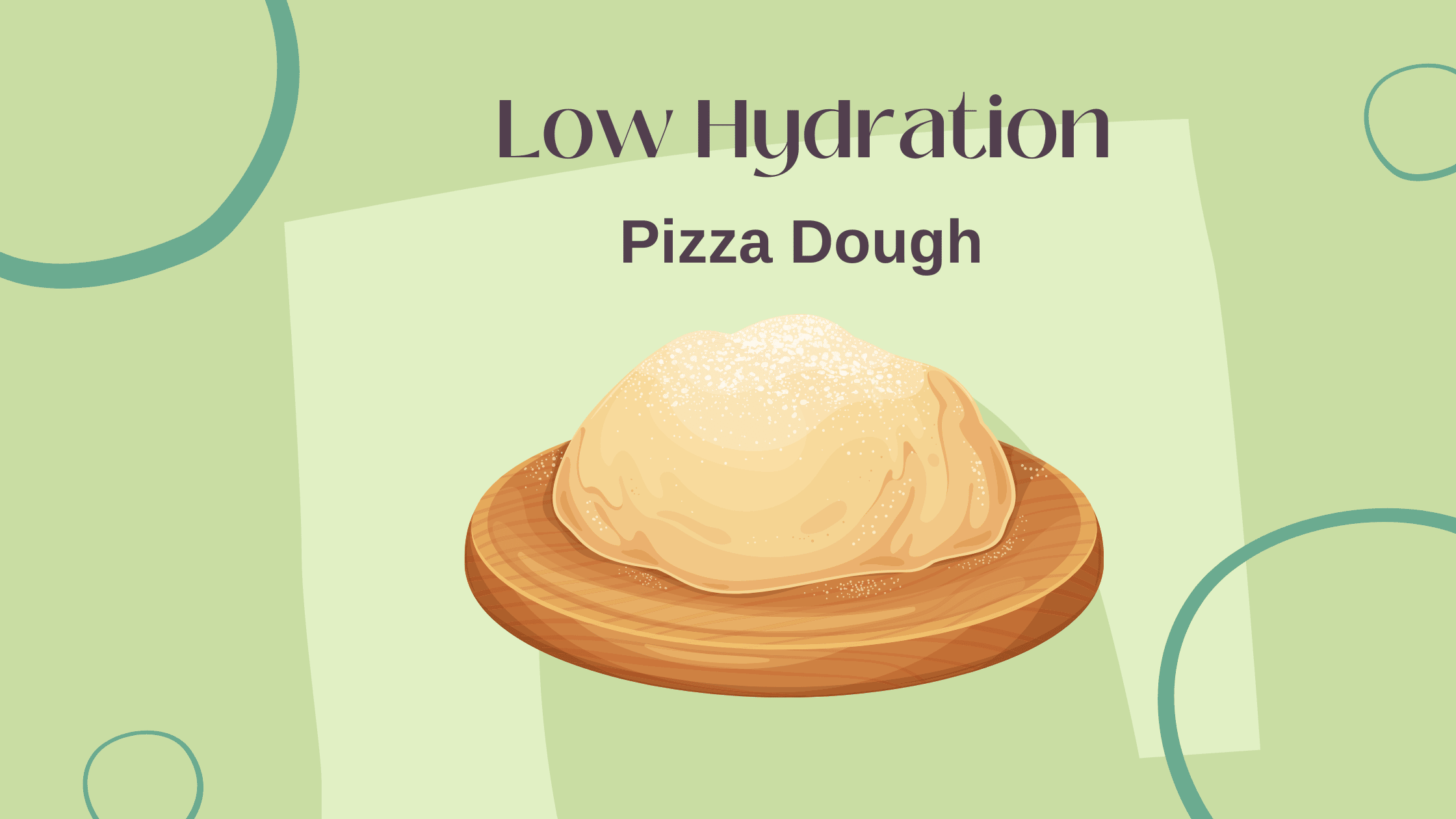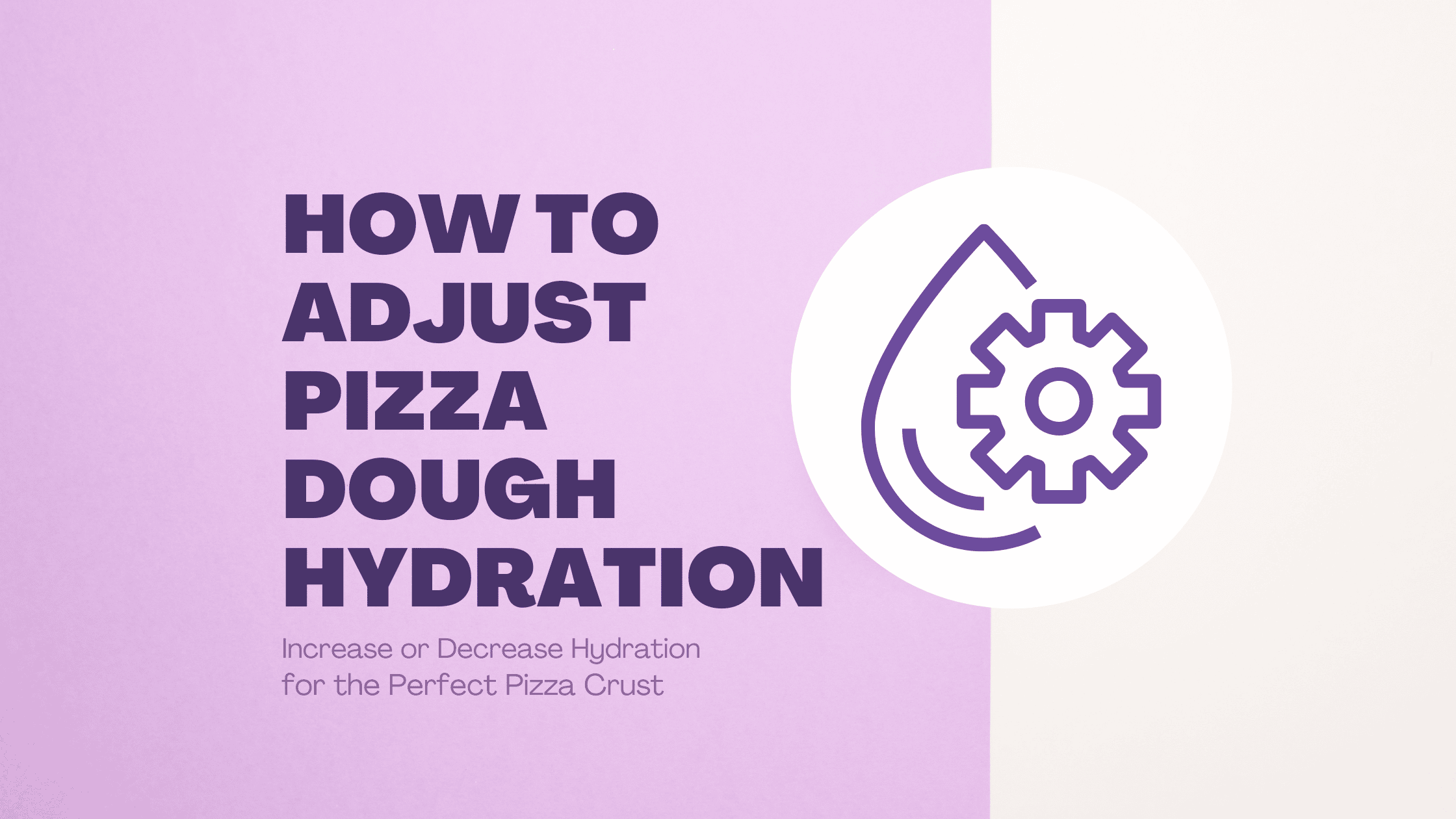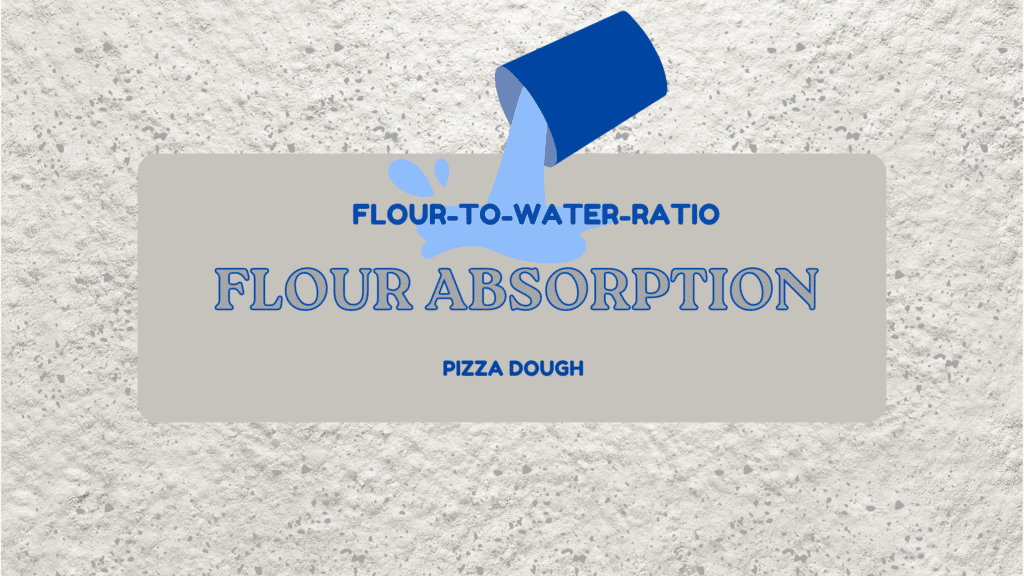Ah, pizza. The one food that unites us all!
What would we do without our delicious, cheesy slices of heaven?
But have you ever considered what goes into making the perfect pizza?
One key ingredient is Flour! – Understanding flour absorption is essential if you want to make pizza like a PRO!
The flour absorption in pizza dough is critical in determining how your pizza will turn out. Whether you’re an experienced chef or just starting out, understanding the importance of flour absorption in pizza dough can help you make delightful pizzas that everyone will love.
So let’s get started!
Here’s What You Will Find:
Key Takeaways
Flour Absorption
Flour absorption refers to the amount of water a flour can absorb in a dough.
Flour absorption affects the texture and structure of the dough, determining if the crust is crispy or chewy.
The more protein content (gluten) flour has, the more water absorbs.
Proper flour absorption ensures a consistent dough, which is essential for making a delicious pizza.
What is Flour Absorption?
Flour absorption is the amount of water that a specific type of flour can absorb, affecting the dough consistency and, ultimately, the final result of your pizza crust.
If your dough is too dry, it won’t rise properly and will result in a dense crust.
On the other hand, if the dough is too wet, it will be difficult to handle and might lead to a soggy crust.
The type of flour you use, the water-to-flour ratio, the mixing method, and other ingredients all play a role in determining flour absorption. Understanding and controlling flour absorption is crucial in making the perfect pizza crust.
Flour Water Absorption
Water absorption in pizza making is crucial to ensure that your pizza comes out perfectly. However, getting the right ratio of water to flour can be tricky.
For starters, you want to make sure that you are using enough water so that the dough can form properly and become elastic and pliable. If not enough water is used, the dough will be dry and difficult to work with.
On the other hand, if too much water is added, it will be sticky and hard to manage.
The best way to get the right water ratio to flour depends on what type of pizza crust you’re making: thin or thick.
Generally speaking, for a thin crust, you’ll need about 40-60% hydration (water-to-flour ratio), whereas, for a thick crust, it should be around 70%.

Measuring Flour Absorption
Flour absorption refers to the amount of water flour absorbs when making dough. It is measured in Brabender Units (BU), a flour quality measurement unit. One BU equals the amount of water that will hydrate 100 grams of flour to achieve a specific dough consistency.
Bread baking quality (BU) is measured by performing a Farinograph test, which assesses the dough’s water absorption, mixing tolerance, and stability by subjecting it to mechanical stress and measuring the resulting resistance and energy absorption.
Flour Absorption Rate
If you’re making pizza at home, it’s important to understand the water absorption rate of flour. Knowing this information can help ensure your dough comes out just right every time.
Flours with a higher protein content absorb more water than other flours, which makes them ideal for pizza dough. Gluten is made up of proteins and gives your dough stretchiness and chewiness – both characteristics that make good pizza.
Generally, pizza and bread flour absorb around 50-55% of its weight in water, while all-purpose flour absorbs 45-50%.
Here’s a table of the flour absorption rate for some common pizza flours:
| Flour Type | Absorption Rate |
|---|---|
| All-Purpose | 42-48% |
| Bread Flour | 45-62% |
| 00 Flour | 45-60% |
| Semolina | 55-75% |
Note: Flour absorption rate can vary based on factors such as humidity, temperature, and the specific brand of flour.
Ultimately, the amount of liquid used in your dough will depend on the type of flour used and other factors like humidity levels in the kitchen and how long you let the dough rest before rolling it out.
Farinograph Test
The Farinograph Test measures the quality and behavior of wheat flour in the dough. The test uses a machine called a Farinograph, which measures the resistance of dough to mixing and the energy required to mix it.
The test provides information about the dough’s stability, tolerance, and development time, which are key factors in determining the suitability of flour for different applications. The Farinograph measures the dough’s absorption, mixing, and stability over time and provides a graph showing the dough’s behavior during mixing.

Bakers, millers use test results, and other industry professionals to evaluate flour quality and optimize recipes for specific applications. The Farinograph is widely used in the baking industry because it provides reliable, objective information about flour quality and helps to ensure consistent results in the production of baked goods.
The measurement is important because it helps bakers determine the amount of water needed to make dough with a specific consistency and texture. High-absorption flour requires more water, while low-absorption flour requires less water.
Baker’s Percentage Method
The baker’s percentage method is a way to express the ingredients in a dough recipe as a percentage of the total flour weight. It allows for precise and consistent dough making.
Flour absorption, on the other hand, is the amount of water a particular type of flour can absorb and still produce a manageable dough.
The baker’s percentage considers the flour absorption rate to determine the correct amount of water to use in the dough recipe.
In pizza making, controlling flour absorption is important for achieving the desired dough texture and pizza crust.
Why is Flour Absorption Important in Pizza Baking?
Flour absorption is important in pizza baking because it determines the dough’s consistency, affecting the pizza crust’s final result. The right dough consistency is essential for a good crust, affecting the pizza’s texture, flavor, and overall quality.
If the dough is too dry, it won’t rise properly, resulting in a dense and chewy crust. On the other hand, if the dough is too wet, it will be difficult to handle, and the crust will be soggy and undercooked.
The crust’s flavor and texture will be negatively impacted in both cases.
That’s why controlling flour absorption is crucial in making a delicious pizza. It ensures that the dough has the right consistency, which leads to a perfectly baked, fluffy, and crispy crust.
Factors that Affect Flour Absorption
Factors that affect flour absorption include the following: the type of flour, water-to-flour ratio, mixing method, room temperature, and humidity, and other ingredients such as salt, sugar, and fat.
These factors determine the amount of water a specific type of flour can absorb and affect the dough consistency and, ultimately, the final result of the baked product.
Type of Flour
The type of flour used in pizza dough greatly affects its flour absorption, as different flours have varying protein and gluten content, leading to different levels of hydration and texture in the final crust.
The flour absorption in pizza dough is a crucial factor in determining the texture and flavor of the crust. Different types of flour have different levels of protein and gluten, which can greatly impact the dough’s hydration and structure.
For example, high-protein flours like pizza flour and bread flour absorb more water and create a chewy, elastic dough, while lower-protein flours like cake flour lead to a tender, crumbly dough. For more info, check our article on the best pizza flour.
How Different Flours Have Different Absorption Capacities
Most people aren’t very keen on how flour absorbs water. It’s not that complicated, but there is a reason that so many types of flour are available.
It has a close relationship to absorption and the rate of hydration. Depending on the type of flour that you use, water absorption will not be equal for every kind of flour.
Different brands and types of flour will absorb different amounts of water.
If you use all-purpose flour instead of bread flour or add whole wheat flour to your dough, you must adjust the water you use when making pizza dough.
The flour absorption varies according to the grain and the season when it was harvested.
Also, the same wheat flour brand may absorb more or less water depending on your kitchen’s temperature and moisture or how the flour was stored.
Understanding the unique properties of different flours is key to creating the perfect pizza crust.
Hydration
Hydration plays a crucial role in the final texture and flavor of the crust. A well-hydrated dough will produce a crust that is crispy on the outside and tender on the inside, with a good balance of chewiness and elasticity.
Water to Flour Ratio
The water-to-flour ratio is a critical aspect of dough preparation as it directly affects the final baked product’s texture, flavor, and structure.
If the dough is under-hydrated, it will become dense and tough, lacking the desirable chewy texture.
On the other hand, if the dough is over-hydrated, it will become too sticky and difficult to handle, leading to a soggy and tasteless crust.
The hydration level for pizza dough typically ranges from 60-65%, with some variations depending on the type of flour and personal preference. Proper hydration is essential for gluten development and starch gelatinization, which results in a well-structured crust with a desirable texture and flavor.
Room Temperature and Humidity
Room temperature and humidity can also impact flour absorption when baking. When it’s hot and humid, the dough will absorb moisture faster and require less water, whereas, in a cool and dry environment, the dough will absorb water slower and need more moisture.
This can affect the texture and structure of the final baked crust, so it’s important to consider the environment when measuring your ingredients and adjusting the hydration accordingly.
Mixing Method
The mixing method plays a crucial role in flour absorption and the final outcome of baked goods.
Kneading:
Adequate kneading is important for the development of gluten, which helps the dough trap carbon dioxide produced by yeast and become light and airy.
Over-kneading can result in a dense and tough dough, while under-kneading can lead to a weak and crumbly texture.
Mixing Time:
The length of mixing time also affects the gluten development and, ultimately, the texture of the final crust.
Overmixing can result in a dense and tough dough, while undermixing can lead to a weak and crumbly texture.
Mix until the dough comes together; the ideal mixing time will depend on the recipe and ingredients used.
Other Ingredients
Other ingredients in baking can also impact flour absorption and the final outcome of the pizza crust.
Salt:
Salt can affect gluten development and the overall flavor of the baked product.
Too much salt can result in a dense and tough dough, while too little salt can lead to a bland flavor.
A proper balance of salt is important for optimal gluten development and flavor.
Sugar:
Sugar affects fermentation by providing food for yeast, which results in carbon dioxide production and dough rising.
Too much sugar can lead to excessive yeast activity and may result in poorly structured dough.
A proper sugar balance is important for yeast growth and optimal fermentation, producing a well-risen and flavorful baked product.
Oil:
Oil can affect the tenderness and flakiness of the baked product. Too much oil can result in a greasy and heavy baked crust, while too little oil can lead to a dry and tough dough.
A proper balance of oil is important for the desired texture and flavor.
It’s important to keep in mind the interplay between these ingredients and flour absorption to achieve the desired outcome in baking.
How to Measure Flour Absorption
Measuring flour absorption is an important aspect of pizza making as it helps determine the right amount of water to use in the dough recipe.
This helps ensure that the dough has the desired texture and consistency, leading to a delicious and satisfying pizza crust. To measure flour absorption, a simple test can be done by mixing a small amount of flour and water and then measuring the amount of water absorbed by the flour.
This information can then be used to adjust the water content in the dough recipe and create the perfect pizza dough.
How to Measure Flour Absorption at Home
The absorption ability of flour is usually between 55% and 65%. Place a small quantity of flour (100 g/4 oz.) in a bowl to determine the absorption rate of a particular flour.
Add water gradually from a beaker containing a known amount of water. As the water is added, mix with a spoon until the dough reaches the desired consistency.
You can knead the dough by hand for final mixing and determination of consistency. Weigh the unused water. Divide the weight of the water used by the weight of the flour, and there you have it!
Improving Flour Absorption
Improving flour absorption is important in making great dough, especially in pizza.
Here are a few tips to help you improve flour absorption:
Use the right type of flour.
Different types of flour have different absorption rates, so it’s important to choose the right type of flour for your recipe.
Check your flour if your pizza dough is dry or sticky or too soft or rigid. It could be that you may have used the wrong type of flour for the recipe.
Measure accurately.
Correctly measuring your flour and other ingredients is crucial.
Using accurate measurements of flour and water is crucial to improving flour absorption.
Hydrate the flour properly.
Slowly adding water to the flour and using a gentle mixing technique can help ensure that the flour is fully hydrated and absorbs the water evenly.
Give the dough time to rest.
Allowing the dough to rest for a period of time can help improve its texture and consistency, leading to better absorption.
Experiment and adjust.
Check your flour if your pizza dough is dry or sticky or too soft or rigid. It could be that you may have used the wrong type of flour for the recipe.
Over time, you can experiment with different flour types and water ratios to find the perfect combination for your dough recipe.
When experimenting with new flour, be prepared to add more water or a bit more flour to your dough to adapt to the variations.
It’s essential to note the changes you made to your recipe for your next batch of dough.
By following these tips, you can take your pizza-making to the next level and create delicious and satisfying pies that everyone will love!
FAQs
How much water can flour absorb?
It depends on the type of flour and the conditions (temperature, humidity, etc.), but flour generally can absorb up to 60-70% of its weight in water.
How does flour absorb water?
All types of flour absorb water differently, but they all share the same basic principle. When mixed with liquid, the particles of the flour swell and bind together to form a thick paste. This paste traps and retains moisture, which helps to form a strong dough for baking. The more finely ground the flour is, the more easily it will absorb moisture.
How to increase water absorption in wheat flour?
You should always start by sifting your flour before measuring the amount needed for your recipe. This simple step helps break down any clumps in the flour and increases its surface area, which improves its ability to absorb liquid more efficiently. You may also want to consider adding a tablespoon of fat or oil for each cup of flour used as an additional way to increase moisture absorption without altering the flavor or texture of your dish too drastically.
The Last Slice
Understanding the concept of flour absorption is crucial for making the perfect pizza dough. With the right balance of water and flour, your dough will be soft, elastic, and easy to work with. Whether you prefer a crispy or a chewy crust, the key is experimenting and finding what works best for you!
So, grab your flour, yeast, salt, and water, and get ready to create the pizza of your dreams!
Additional Resouces on Hydration

Best Water for Pizza Dough: Temperature, Quality, and Hydration
the PROs
In this article, we are going to dive deep into the mysterious ways of water. In conjunction with flour, yeast, and salt, it can make the most spectacular pizza dough.

High Hydration Pizza Dough – Secret Ingredient to Perfectly Crispy Pizza
the PROs
Are you looking for a delicious, crunchy high hydration pizza dough recipe? This type of dough is very popular among …

Low Hydration Pizza Dough: No More Soggy Pizza!
the PROs
Are you wondering what low-hydration pizza dough is? A pizza dough’s hydration is one of the most important factors when …

How to Adjust Pizza Dough Hydration Levels for a Perfect Crust
the PROs
How to Adjust Pizza Dough Hydration Making good pizza dough is an art form and one of the most important …
Enjoy!
Not a PRO? Not a Problem!
Take a pizza class to bring your pizza skills to the next level,
so you can be a PRO!
Related Posts

Costco Pizza Delivery: Find How You Can Get It Now!
the PROs
People go to Costco’s food court for many different reasons, but the cheesy slice of pizza they serve is among …

Pizza for Beginners: Don’t Buy Pizza, Make It! Here’s How to Get Started!
the PROs
You have this idea that you want to make pizza at home as opposed to ordering it, but where do you start? Don’t worry! Here you will find answers and directions to all your questions.

Pizza Toppings Under Cheese or Over Cheese? [Why the Order Matters]
the PROs
Is Pizza Cheese on Top or Bottom? Hey pizza lovers, are you wondering if you should layer pizza toppings under …
Newsletter
Subscribe to our Recipe of the Week newsletter and receive our partners’ latest recipes, tips, and discount offers.
Keep in Touch!

